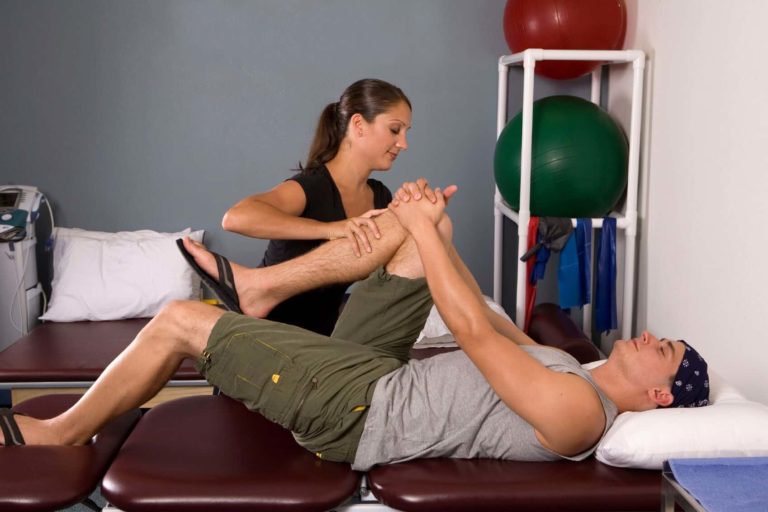
It is not unusual to see people come into my clinic limping with pain, favoring their back or legs. Physicians often suggest physical therapy and stretching to help relieve the incredible pain of Sciatica. Treatment begins while there is still pain, but the hopeful outcome is that the pressure on the Sciatic nerve is relieved through stretching and exercise, relieving the suffering and the limping disappears.
How does Sciatica Cause Pain?
Sciatica is not a medical diagnosis, but a symptom that points to an underlying physical problem. Sciatic pain originates in the lower back lumbar region and radiates down to the back of the legs.
The Sciatic nerve is the source of pain when it is compressed by tissue, bone, or scar tissue. The Sciatic nerve travels through the lumbar vertebrae, across the buttocks, and then branches down the legs to the feet.
Problems that generate this type of sciatic pain include the following.
- Pelvic misalignment
- Herniated disc
- Stenosis (the narrowing of the nerve space)
- Tightening of the hip joint
Focusing on Pain Relief
Considered one of the most painful conditions that involve the lower back and legs, the sciatic nerve system consists of the largest nerve and individual nerve roots branching out from the spine. When this very large sciatic nerve is irritated in the lumbar vertebrae, closest to the point of origin, the pain is greater.
Different areas of compression along this nerve are often the cause of varying symptoms involving the lumbar area of the back, muscles of the buttocks, the back of the thighs, behind the knees, ankles, feet and toes. Nerve impingement creates numbness, tingling, weakness, and deep pain.
Physicians understand that everyone experiences this type of back pain differently. They prescribe physical therapy treatments knowing that professional therapists perform evaluations to discern the best type of treatment modes for each individual. For the specific needs of sciatica patients, a combination of solutions is offered.
How to Manage Sciatica Symptoms
Sciatica pain varies from constant and incapacitating to occasional episodes. This pain varies because of the different locations where the sciatic nerve is compressed or pinched. Some patients experience pain, tingling, and numbness down both legs. Others experience sciatic pain on only one side, down one leg.
First, unlike other types of back injury pain problems, physicians recommend that patients keep moving. Patients need to maintain their back and leg muscle strength to prevent further compression in the sciatic nerve. Doctors recommend that the patient meet with a physical therapist to determine a set of therapies most appropriate for specific pain areas. Exercises, stretching, and proper bending according to when patients experience relief.
Clinical research studies show the sooner a patient begins therapy, the better the outcome. Physical therapies should begin within 16 days of the onset of pain.
If you’re experiencing sciatica pain, click here to arrange a complimentary 15-minute consultation with a Physical Therapist.
 ABOUT THE AUTHOR
ABOUT THE AUTHOR
Kim Gladfelter, MPT, OCS, FAAOMPT
Women's Health Physical Therapy Specialist at PhysioFit Physical Therapy & Wellness
Kim Gladfelter is a physical therapist, Pilates instructor, educator, author, and co-founder of PhysioFit Physical Therapy & Wellness. She is known as a keen, well-rounded expert of healing through movement and women’s health specialist in the Silicon Valley area.
Kim has helped men and women of all ages to stay active and feel their best. She also writes about managing pain in her health columns, blogs and the local Los Altos Town Crier newspaper as well as reaches out to the local community, support groups, schools, libraries, and sports centers to advise and educate on body awareness and therapeutic exercise.

 Los Altos, CA
Los Altos, CA
